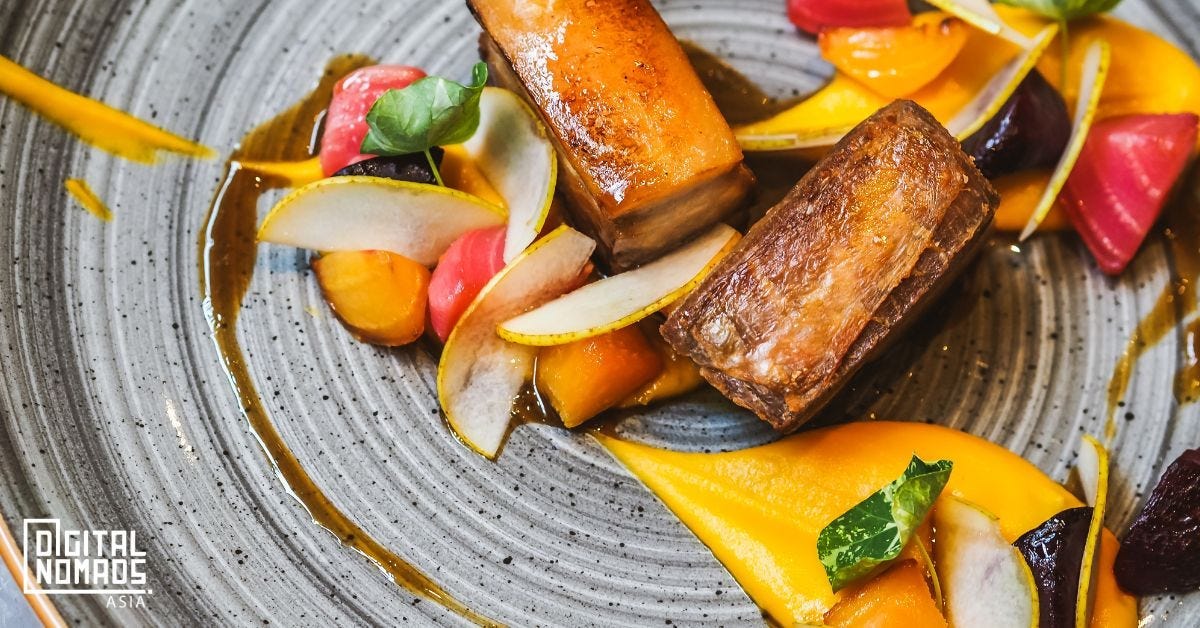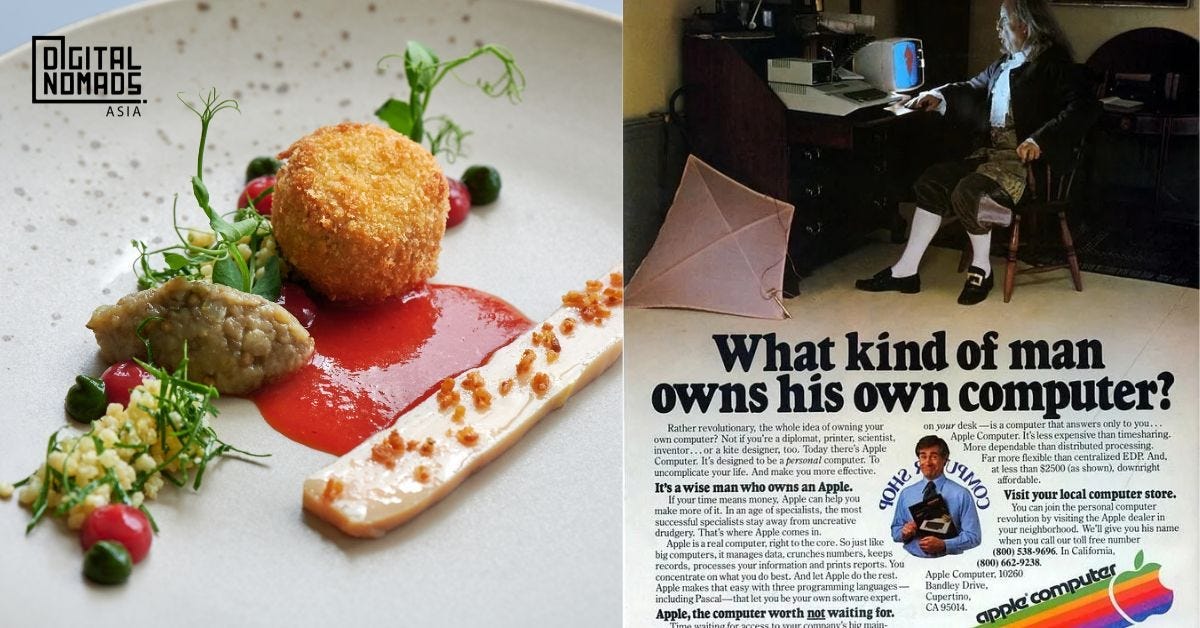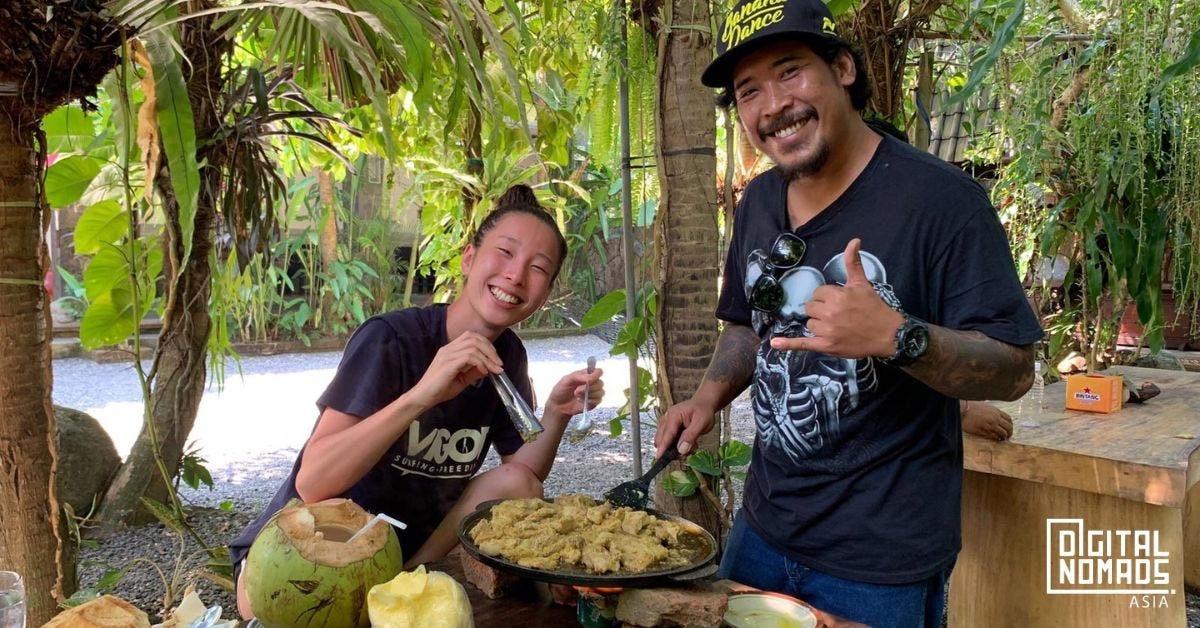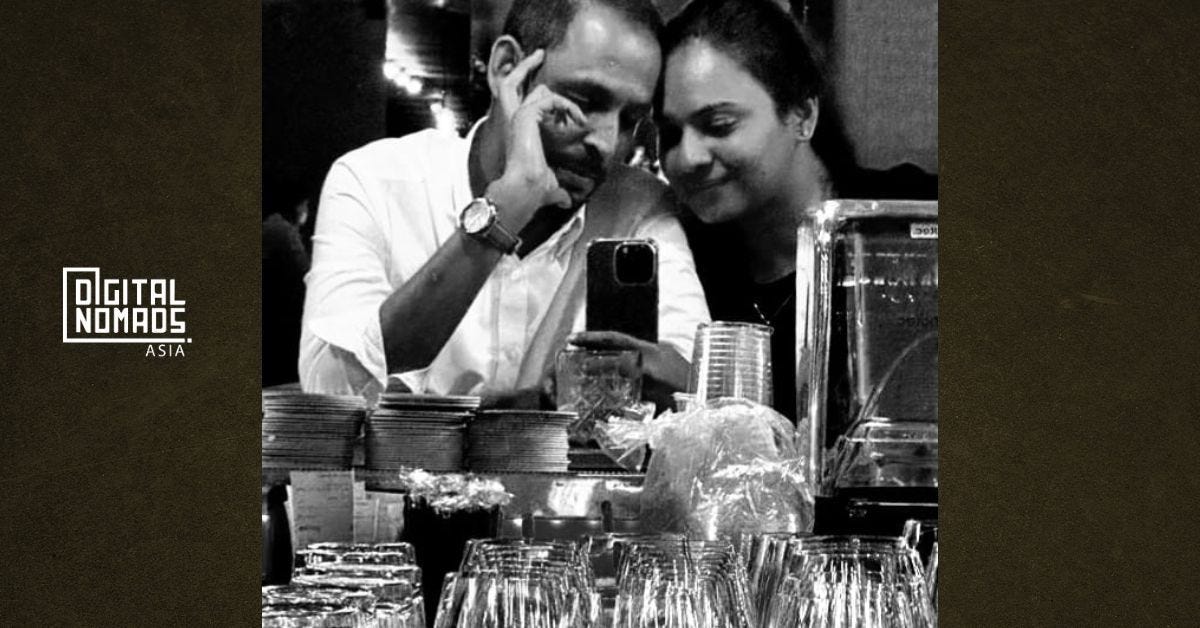Want to Master Marketing? Start Working in a Kitchen..
Like the perfect dish, a perfect marketing campaign is more than the sum of its parts; it’s an experience that leaves a lasting impression.

I started my career working in some dodgy restaurants that I won’t name, hustling my way through the kitchen chaos, all the way up to renowned places like the Mandarin and the Ritz Carlton. The journey taught me more about precision, creativity, and the art of perfection than any marketing course ever could.
Imagine stepping into a kitchen where the aromas hit you immediately, inviting and tantalising, promising an experience before you’ve even laid eyes on a dish. A chef is not just a cook but an architect of sensory experiences, someone who knows the power of detail, precision, and presentation. From the colours on the plate to the delicate interplay of taste, aroma, and texture, each dish is a work of art crafted to create an unforgettable memory.
As marketeers, we’re not in the kitchen, but we are in the business of experiences. Just as a chef prepares each plate to be more than just food, our goal is to make every campaign, every brand message, something to savour, something memorable. There is a powerful lesson for us in the way chefs approach their craft — one that reminds us that in marketing, as in cooking, we have only one chance to leave a lasting impression.
The Visual Feast - Branding as Plating

When a plate of food is set before you, it speaks before you taste it. The colours and composition tell a story, one that reveals a part of the chef’s intention and the dish’s personality. A brilliant green garnish hints at freshness, while dark, rich sauces imply depth and complexity. Chefs know that people eat first with their eyes, and they use this to draw diners into the experience.
In marketing, our equivalent is branding. Our design elements — logos, colours, typefaces — must immediately tell a story, one that resonates with the audience at first glance. Just as a chef’s plating sets the tone for the dish, branding sets the stage for what people can expect from a product or a company.
In our craft, colours aren’t merely aesthetic choices; they are the first touchpoint for emotional connection. Just as a scattering of greens on a plate conveys vitality, using a vibrant and dynamic palette can speak to a brand’s energy and innovation. Conversely, a minimalist design, much like a dish elegantly plated with restraint, might communicate refinement and sophistication.
Consider the iconic branding of Coca-Cola, with its timeless red and white design. The red evokes passion and energy, while the white gives it a sense of simplicity and purity. Much like the first impression of a chef’s plate, a brand’s visual identity must draw people in, promising something worth savouring.
Taste - Crafting a Message that Resonates

The culmination of a chef’s work lies in the taste of the dish. This is where the chef’s true skill and intent are revealed. Flavours must harmonise, textures must complement each other, and the dish must leave a lasting impression. Taste is a moment of truth; a dish is either memorable or it’s forgettable.
For us, taste is the emotional takeaway of our message. It’s what resonates with the audience long after they’ve moved on, and it’s what they carry with them as their understanding of the brand. Every campaign, every advertisement, every message is, in essence, a carefully balanced flavour profile. There’s a core theme, much like the main ingredient in a dish, and it’s supported by additional elements that add layers and depth. Just as a chef balances salt, acid, and sweetness, we balance information, tone, and emotional appeal.
Think about some of the most successful marketing campaigns in recent history — Apple’s “Think Different” or Nike’s “Just Do It.” The core message of each campaign is simple, but it’s delivered with such precision and balance that it resonates universally. These messages linger like the taste of a well-seasoned meal, sticking with the audience long after the first encounter. As marketeers, we need to approach each message with this same attention to harmony, ensuring that our words and images come together to create a flavour that’s distinct and impactful.
Aroma - The Power of the First Impression
Aroma is often the first sense to engage when food is near. Before a diner even takes a bite, the scent wafting from the dish creates anticipation, setting expectations for what’s to come. A chef uses aroma to hint at the experience ahead, allowing the diner’s imagination to begin the journey before the meal even begins.
In marketing, this initial engagement is our hook — that first sentence, headline, or visual cue that draws the audience in. Much like the aroma of a dish, a strong hook has the power to captivate, making people curious, engaging their senses, and sparking their desire to experience more. It’s a teaser, an invitation to explore.
Think of perfume ads, for example. You can’t smell the fragrance through the screen, yet the imagery and language used must create a sense of aroma, capturing something intangible yet enticing. A single phrase like “the essence of elegance” paired with a luxurious image conjures a sensory impression, building an expectation in much the same way that the aroma of truffle oil hints at decadence and richness.
Our goal is to create campaigns that have that captivating aroma — an irresistible quality that entices people to look closer, to read more, to engage more deeply. Every campaign should carry a scent of something memorable, something intriguing, that piques interest and builds anticipation for what’s to follow.
Design - Crafting a Multi-Sensory Story

The design of a dish goes beyond simple presentation; it is a deliberate act of storytelling. A master chef will guide a diner through the meal, bite by bite, creating an experience that builds as the flavours unfold. Each component is placed with intent, each garnish tells a part of the story, and each bite offers a new layer to the experience.
Our campaigns are like dishes that need careful construction. In the world of marketing, design is not simply about aesthetic value; it’s about creating a journey for the audience. Just as a chef considers the order in which ingredients will reveal themselves, we consider how to lead people through our content, revealing new information, building curiosity, and deepening engagement as they go.
Consider the storytelling of a brand like Patagonia. Every element, from its earthy, natural colours to its powerful visuals of rugged landscapes, builds a narrative. It isn’t simply about selling jackets and outdoor gear; it’s about inviting people to be part of a larger story of sustainability and environmental stewardship. Each element of Patagonia’s marketing design guides the audience through a story, much like a chef’s plating guides a diner through a culinary journey.
When we design campaigns, we must think beyond the surface and aim to create a layered, immersive experience. Every element — from visual design to copy — should work together, enhancing the story and guiding the audience through an experience that they won’t soon forget.
The Science of Cooking - Data, Metrics, and Precision

The work of a chef is not only an art but also a science. Behind every memorable dish lies an intricate knowledge of chemistry, temperature, timing, and ratios. A slight misstep can alter the entire dish, turning a potential masterpiece into something ordinary. Chefs must work with precision, understanding that even the smallest error in measurement or timing can affect the outcome.
In marketing, our data and metrics are the equivalent of a chef’s precise measurements. Every choice — from audience segmentation to ad placement — requires careful calibration. We must understand the science behind what resonates, what engages, and what drives action. Just as a chef uses thermometers and timers to control every variable, we use analytics to measure the effectiveness of our campaigns, making adjustments where necessary to ensure the message hits its mark.
Consider A/B testing, our equivalent of recipe development. Chefs refine a recipe through trial and error, tasting and adjusting until the flavours balance perfectly. In marketing, we do the same through testing and data-driven refinement, ensuring that our campaigns are as targeted and impactful as possible. Success in both fields requires a blend of creative intuition and scientific precision — the ability to experiment and the discipline to measure and adapt.
One Chance to Impress: The High-Stakes of Every Campaign
In both cooking and marketing, we often only get one chance to make an impression. A chef’s plate lands on the table, and in that moment, it either captivates or falls short. There’s no second chance, no re-dos; it’s a high-stakes performance where the diner’s experience hinges on every detail being just right.
In marketing, the stakes are similarly high. We might launch a product with a single campaign or promote a message that has to resonate immediately. Like food, marketing is an ephemeral experience — it’s about creating a moment that sticks. Whether it’s a groundbreaking product launch or a heartfelt brand story, we often only have a brief window to capture attention, to connect, and to make a lasting impact.
The best chefs know that every dish must be unforgettable, crafted with care and precision as if it’s the only chance they have to impress. As marketeers, we should carry the same mindset, understanding that every campaign should be treated as our signature dish — bold, memorable, and executed with perfection.
Becoming the Chefs of Our Craft

There is an art to marketing that parallels the artistry of cooking. Both demand creativity and precision, passion and discipline, science and intuition. Just as a chef blends flavours, textures, and aromas to create a singular experience, we blend visuals, messages, and data to craft a brand’s identity, its story, and its connection with its audience.
To truly excel in our field, we must adopt the mindset of a chef. We must savour the details, understand the science, and approach every campaign with a commitment to creating something extraordinary. Like the perfect dish, a perfect marketing campaign is more than the sum of its parts; it’s an experience that leaves a lasting impression, an encounter that stays with people long after the moment has passed.
Because, in the end, great marketing, like great cooking, isn’t just seen or heard — it’s felt, savoured, and remembered.
Happy eating..
For 84 Musing..
RV







